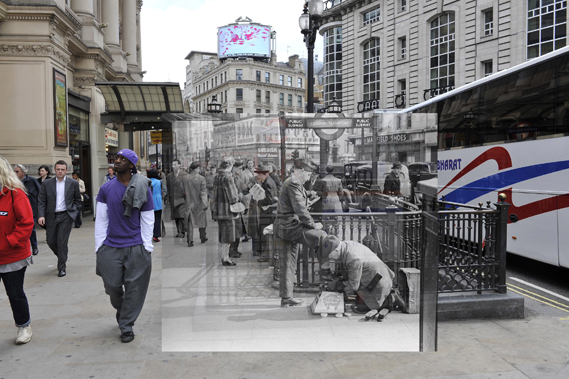You know that feeling when a new technological advancement comes around – the feeling you pushed aside when Google Wallet launched, or when QR codes started popping up on the subway? That tiny, inaudible groan at the burden of keeping up? Well, I can honestly say that there’s one technology I’m looking forward to wholeheartedly embracing, with an anticipation unmatched since I realized I could do my pre-calc equations on a graphing calculator:
Augmented reality. Oh yes, it’s coming.
For those of you unfamiliar with augmented reality, imagine standing on the sidewalk in front of your favorite nighttime hot-spot. Holding up your smartphone to the façade and looking at the screen, what you see is not a club, bar, bookstore, or even Max Brenner’s, but an 18th-century boardinghouse, with a carriage parked out front. Augmented reality takes advantage of GPS information, 3G or 4G wireless internet access, and the input of overlaying images to annotate or alter the real world as viewed through a device. The overlaying images can be anything from historical photographs to a Star Wars/dinosaur battle in a conference room.

According to the 2011 Horizon Report, which publishes a list of technologies to watch and how quickly those technologies will become widely adopted, augmented reality is slated to become big in the next 2-3 years. While the technology has existed for about 30 years, improvements in wireless infrastructure, portable devices, and image manipulation means consumers won’t need to walk around with an electronic visor over their eyes to experience today’s version.
Imagine the implications of augmented reality for gaming and learning. Human memory is strengthened through spatial associations. We remember how to get to our favorite web pages not by their URLs, but by positions of the various clicks needed to arrive at the destination; we naturally describe directions not with street names, but by placement of landmarks. Because information projected through augmented reality imitates 3D space, lessons have the potential to stick with more permanence in the mind.
Augmented reality projects are in full swing in some cities, including the Museum of London’s Streetmuseum app and a new project in our own fair city of Philadelphia. How might you consider integrating augmented reality into your future projects?

1 thought on “Augmented Reality”